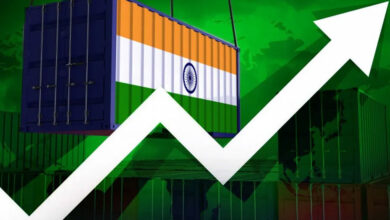Proposed Reforms for DRDO: Debates and the Way Forward
By Prof Satya Narayan Misra
Introduction
Economic liberalization came in the defense manufacturing sector in 2001, 10 years after India decided to be a free market economy in 1991. The policy mosaic included 100% participation of private sector players in defense manufacturing and permitted FDI of 26% from global players.

This was in sharp contrast to Nehu’s socialist policy of 1956, in which military manufacturing and acquisition remained under the exclusive preview of the government, and space and atomic energy. Specifically under the direct control of the Prime Minister’s Office.
DRDO was created in 1958 to pursue research in defense R&D and to reduce dependence on imports. From a fledgling setup, the 1980s under the stewardship of Dr Kalam witnessed the IGMDP programme building a comprehensive range of missiles like Agni, Prithvi, Akash, and Nag. With 52 DRDO labs engaged in the design and development of Small Arms, Electronic Warfare (EW) systems, Tanks, Armoured Vehicles, Sonar Systems, Missiles, and Command & Control systems; a team of 5,000 scientists is engaged in 900 projects with 25,000 support staff with a budget of Rs 23,264 Cr in the year 2023-24. The Prototypes developed by DRDO are produced by defense Public sector Undertakings (PSUs) and Ordnance Factories.
DRDO is, and has been, the flag bearer of Make in India in military manufacturing. But time and cost overruns of many of these programs and the low level of self-reliance achieved have been a recurring concern. Several committees have been engaged to bring out the innards of the problems that ail the DRDO in the past like the Kalam Committee in 1992 and the Ramarao Committee in 2008.
The latest committee is of Vijay Raghavan, who retired as a Principal Scientific Advisor, in response to the report of the Parliamentary Committee on Defence that 23 out of 55 high mission projects are running behind schedule.
Significantly, the aim here is to provide a pen-sketch of (a) recommendations of the committees in the past, (b) Make in India in Military Manufacturing, (c) the major reccommendations of the Vijay Raghavan Committee (2024), and (d) the debates, and the Way Forward

Kalam Committee (1992)
This committee with representatives from the three defense services had assessed that based on the equipment being built through indigenous design or technology transfer, the indigenous production amounted to only 30 percent of the requirements. It set the target to improve the self-reliance quotient to an ambitious 70 percent within a decade.
The Committee identified critical sub-systems where India has had a deficiency of design and development capability, and suggested building national facilities, strongly batting for Joint Ventures with Original Equipment Manufacturers as well as with global design houses. The critical sub-systems where the committee found India to be critically deficient were in the area of Radars, particularly AESA, Seekers, (Passive and Active), Unmanned Aerial Vehicles (UAV), Smart Munitions, and Aero-engines.
Three key deficient areas were Propulsion, Detectors, and Weapons.
While Missile programs like the Prithvi witnessed substantial success, Agni showed promise, programs like Akash, Trishul, and Nag faltered. Dr Abdul Kalam had envisaged the Brahmos program through a joint venture with the Russians, and today, these cruise missiles are possibly the best example of Make in India where export potential is also substantial. Dr Kalam also achieved a high modicum of success in the joint design and development of MR-SAM in collaboration with Israel.
However, the Fifth Generation Fighter Aircraft (FGFA) program as a joint design and development production with Russia for developing a stealth aircraft has not succeeded.
Rama Rao Committee (2008)
The Ramarao Committee highlighted the importance of greater involvement of the Services in the programs being untaken by the DRDO to cut down on time and cost uncertainties.
It also proposed a major structural change by suggesting that the research and development organizations should function under the production organization so that there is complete synergy between design and development, seamless technology transer to the production agencies, and, very importantly, single point accountability.
The Committee was particularly anguished by the delay in the development of the Kaveri Engine for the Light Combat Aircraft (LCA) because of the lack of synergy between the DRDO, ADA, and HAL. While the Government tried to ensure greater Services involvement in DRDO programs, its suggestion to bring DRDO under defense production was stoutly resisted by the DRDO.
Besides, the Ramarao committee’s recommendation to create a board of research for advanced defense sciences, like DARPA in the US, was not accepted.
It would be in the fitness of things to mention that the Kelkar committee in 2005 had suggested a public-private partnership and a level playing field between captive defense PSU and the private sector players, and the government warmed up to the idea, particularly now.
Make in India in Military Manufacturing
The Make in India campaign by Prime Minisiter Narendra Modi has defense manufacturing as a major subset where the government wants to improve its indigenization footprint, given the fact that India is the largest importer of conventional arms. This has come close on the heels of the strategic partnership model suggested by the Dhirendra Singh committee (2015) so that the monopoly of defense PSUs is busted.
As a policy, the government has foreclosed imports of up to Rs 500 crores , and the requirements are now successfully being offloaded to indigenous players. It also introduced a major reform in the major Ordnance Factory setup by according them greater autonomy and asked them to meet the quality, time, and cost requirements of the Services.
SMEs and Startups are being encourage, and that’s a big result-oriented development.
Vijay Raghavan Committee (2023)
The Vijay Raghavan Committee suggested that the focus of DRDO should be on high-end futuristic technologies by associating academic institutions and start-ups, and greater private sector participation.
Most significantly, the Committee suggested that like the Departments of Atomic Energy and Space, DRDO should be under the direct charge of the Prime Minister’s Office (PMO). Being directly under the control of the PM and his experts and advisers, has contributed to the success of these two departments right from their beginnings.
A Defence Technologies Committee (DTC), for instance, under the PMO, could include the Defence Minister, NSA, an authoritative scientist or technologist as a Minister of State, and representative from the Academia and Industry along with the required set of bureaucrats from the Ministries of External Affairs and Defence.
The Raghavan Committee has also recommended the creation of a new Department of Defence Science Technology and Innovation (DSTI) to promote defense R&D in academia and bolster the start-up ecosystem.
Most importantly, DRDO’s role should be limited to research and development and not the development of prototype and technology demonstrators.
The Committee has also suggested that five national test centers should be set up where private players are allowed and facilitated to test their systems. It suggests that deep technologies like Artificial Intelligence (AI), Machine Learning, and Robotics should be promoted.
Quite clearly, the report suggests that the private sector under the watch of the PMO, CDS, and NSA should drive the design, development, and production of major weapons, systems, and platforms. The Committee has concluded that 60 percent of the delays in DRDO is due to internal issues and the absence of required technologies, while around 18 percent are due to the Armed Forces changing their qualitative requirements frequently.
The Debates
The major resistance to the proposed reforms in DRDO is the suggestion to place it under the PM, as in the case of Atomic Energy and Space. Some insiders feel that unlike the closed system In ISRO and DAE, where both design development and production are taken up by them, in the case of DRDO the prototypes are built by the DRDO but produced either by Defence PSUs, Ordnance Factories, and now, even the private sector.
Besides the suggestion that DRDO should disentangle from the development of prototypes and technology, and concentrate on basic research and development, goes against the general drift of DRDO in applied technologies. Nearly 80 percent of DRDO’ budget is spent on prototype developments, with the balance on basic research. Be it the Missile program, LCA, Main battle tank, LCA or EW systems, prototype development, and technology transfer have been DRDO’s bread and butter.
Many observers believe that the Vijay Raghavan committee is heavily influenced by the US Defense Advanced Research Projects Agency (DARPA) model, which is responsible for some of the finest miliary technologies from Space, Missiles, Underwater Systems, and aircraft. Set up in 1958, DARPA developed the PC, Internet, Stealth Technology, GPS, Drones, Weather Satellites and lately, the COVID-19 Vaccine. DARPA is also into biological warfare.
DARPA functions with a very small component of scientists, and contracts out core functions to universities, industries and government R&D institutions.
Unlike DRDO, where close to Rs 23,264 crores are invested by the government, the US government does not make any allocation to DARPA for developing emerging defense technologies but funding is part of various projects.
The Way Forward
It is argued that any attempt to replicate the DARPA model would be far-fetched and illusionary for India.
The suggestion to involve the private sector and academia in a bigger way is most welcome, as the present DRDO structure is highly bureaucratic and tries to protect its inherent inefficiencies. The suggestions to put DRDO under the PMO should be seriously considered as it will provide the PM with a closer look at the emerging defense technologies, the capability of adversaries, and the need to improve our indigenous military industry capability.
In any case, our missile program is very closely linked to the Department of Space and the Department of Atomic Energy and they should form the trinity under the PMO. The Vijay Raghavan Committee must be complimented for suggesting this fundamental change in the organizational structure.
Notably, DRDO’s pursuit of niche technologies is seriously hamstrung by our lack of investment in R&D, poor academic foundation in our universities and IITs, and denial regime for critical technologies from abroad. Except for IIT Kharagpur which has a Centre for Naval Design Technology, no other campus offers any course on specilised defence technologies.
The Subramaniam Committee in 1964, after the Chinese debacle, had rightly observed that India couldn’t successfully design and develop a Gas turbine Engine as its academic institutions didn’t have the necessary academic wherewithal, and that we should go for technological collaboration with global engine houses instead of making grandiose claims. The failed Kaveri engine program is a testimony to the prescience of the Subramaniam Committee.
The critical technologies thumbnailed by the Kalam Committee in 1992 still elude the DRDO in a substantial measure. He had rightly suggested that the way forward for India is to go for Joint ventures with foreign OEMs where both private sector players and India’s DPSUs could collaborate.
Then, close to 80 percent of R&D funding is done in India by the government, while in other countries, private players invest substantially as in the USA and France. India must put in place Dr Kalam’s vision of self-reliance through JVs and R&D collaborations towards a credible Make in India goal in military manufacturing.





